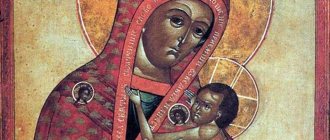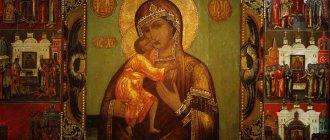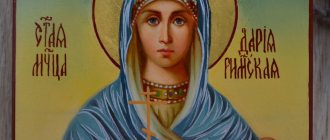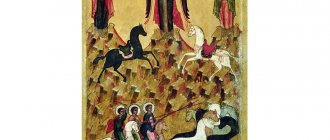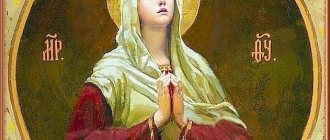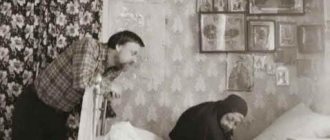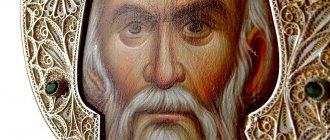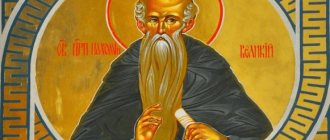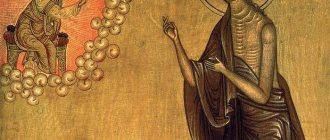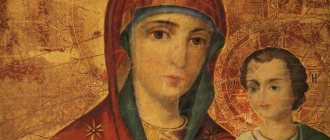"Save me, God!".
Thank you for visiting our website, before you start studying the information, please subscribe to our Orthodox community on Instagram, Lord, Save and Preserve † - https://www.instagram.com/spasi.gospodi/. The community has more than 60,000 subscribers. There are many of us like-minded people and we are growing quickly, we post prayers, sayings of saints, prayer requests, and timely post useful information about holidays and Orthodox events... Subscribe. Guardian Angel to you!
He is known not only as a monk, but also as a fairly educated person who actively fought heresy for a long time. The teachings of Orthodoxy in the works of St. Maximus the Confessor are carefully described and explained from different points of view. They were in great demand. Other representatives of the faith relied on them to prove theories.
Brief information about Saint Maxims
Most of the holy martyrs bearing the name Maximus fought for the Christian faith in difficult times. Believers were subjected to massive persecution. Followers of Christ were arrested, tortured and publicly executed in barbaric ways. Thanks to the lifetime deeds of the saints, Christianity replaced idolatry and paganism, and also resisted heretical movements.
Even after death, the righteous, who are often asked for intercession before the Lord, do not cease to help those who pray. Several saints, whose faces are also reflected in icon painting, are especially revered among believers.
Maxim the Confessor
In 580, a boy was born into a revered noble family living in Constantinople, who was given the name Maxim. The kid grew up smart, and from an early age he showed an aptitude for science, especially philosophy. Having matured, the young man received a good education.
Outstanding mental abilities, a philosophical mindset and the benefactor characteristic of a Christian were noticed by Emperor Heraclius. At the age of 30, Maxim became the first secretary of the ruler. He had honor, wealth and power, combined with natural modesty and restraint.
Worldly goods meant nothing to him. For three years of service in the imperial palace, the young philosopher lived with the dream of devoting his existence to spiritual life.
The future saint left his noble position and took monastic vows within the walls of the monastery of the Mother of God near Constantinople. Maxim devoted his life to serving the Lord, day after day comprehending new facets of impartiality, contemplation, and knowledge thanks to the strengthening of faith in asceticism and prayer.
After enduring a decade of silence, he, together with a faithful follower, left the walls of the monastery and settled in a small monastery in Cyzicus, named after St. George. In a secluded monastery, Maxim compiled treatises devoted to the word of prayer, opposition to passions and mercy.
Three years later, during the invasion of the Persian army, the monks had to leave the monastery. The righteous man spent several years wandering. Once in Crete, Maxim came into conflict with the Monophysite heretics. Later, the preacher of the teachings of Christ settled in Carthage, where he became a spiritual disciple of Saint Sophronius. All this time, the monk wrote complex philosophical treatises on the liturgy and Holy Scripture.
Maxim left monastic solitude in order to fight the monothelitism cultivated by the authorities. After the death of his spiritual father, he became the first preacher of Orthodoxy, to whom the eyes of other believers were turned.
In 641, especially difficult times began for Christians. A follower of monothelitism, Constant II, ascended the throne and began to persecute Orthodox Christians, especially Maximus and his associates. Eight years later, at the Lateran Council in Rome, Monothelitism was anathematized, which was the great merit of Maximus the Confessor.
The enraged emperor threw the preacher into prison. He was subjected to terrible torture, after which he could neither write nor speak, but the Lord did not abandon his servant and returned to him the gift of speech and writing. The saint predicted the date of his own death and left earthly life on August 13 at the age of 82.
Maxim Grek
Coming from the noble Trivolis family, Maxim the Greek lived in the 15th century. At birth the boy was named Mikhail. The parents gave their son a good European education. In his youth, Mikhail traveled a lot and studied various sciences, but soon realized that his true destiny was to know the teachings of Christ.
Michael took monastic vows on Mount Athos and was named in honor of Maximus the Confessor. The monk continued to study as a monk, especially zealously studying Orthodox Greek manuscripts. An educated and deeply religious monk was sent to Muscovy with the missionary goal of establishing Orthodoxy and enlightening Christians.
Maxim, who received the nickname the Greek in Rus', translated Christian Greek texts and liturgical books into Latin, and Russian diplomats translated from Latin into Slavic and wrote their own treatises. Having completed the work a year later, the monk had to edit the texts, which ultimately differed from the original.
Soon Maxim fell out of favor with the Grand Duke, who ordered his childless wife to be forcibly tonsured as a nun, deciding to bring a new chosen one. The prince’s behavior contradicted Orthodox laws, which Maxim spoke about in a narrow circle. A series of denunciations against the Greek, communication with the Turkish ambassador and the refusal to translate a historical church book began the case against the monk. At the Council, the Greek was accused of heresy and imprisoned in a monastery under strict conditions of detention.
After 6 years, Maxim was brought forward with a new charge of damaging church books and was assigned to the Tver monastic monastery, where he spent 20 years, after which the bans were lifted. The Greek spent the rest of his life in the Trinity-Sergius Lavra, translating the Psalms. Maxim the Greek was canonized only in 1988.
Maximus Martyr of Antioch
Maximus of Antioch served as a soldier in the imperial troops in the honorable position of the ruler's bodyguard. The throne at that time belonged to Julian the Apostate. While in Antioch, Julian and his army desecrated the Christian market with blood sacrificed to idols, sprinkling it on all food and dishes.
Maxim and his comrade-in-arms Iuventin, during the evening feast of the soldiers, condemned the ruler’s act, calling it lawless and apostate, and the emperor unjust and evil. The words of the soldiers were conveyed to Julian. During interrogation, the martyrs repeated their words to the face of the emperor.
Julian was beside himself with rage and ordered his subjects to be punished. After a brutal beating, the holy warriors were thrown into prison, and at night the emperor sent an executioner to kill them.
Maxim Kavsokalivit Afonsky
Maxim Kavsokalivit was born into a pious family. The parents begged God for a child for a long time and raised their son, teaching him from Christian books. From his adolescence, the boy grew up within the walls of an Orthodox church, and at the age of 16, when his parents wanted to marry their son, he took monastic vows.
His spiritual father was the famous Elder Mark in Macedonia, after whose death the saint asceticised strict monasticism. He arrived in Constantinople, where he settled at the Church of the Most Holy Theotokos, prayed a lot, and behaved like a holy fool.
Later, Maxim, already staying at the Lavra on Mount Athos, had a vision of the Mother of God. When he told about what he saw, they did not believe him. The holy fool led a hermit's life of deprivation, loneliness and wandering. He lived in huts made of grass (kalyvah), burned his shelters, for which he was nicknamed Kavsokalivit.
The Monk Gregory of Sinaite called the saint an angel, asking him to leave his foolishness and pass on spiritual experience to people. Then Maxim settled in a cave, where the emperors visited him, marveling at how accurately the prophecies he uttered were coming true. There is also evidence of how the Monk Maximus rose on the ground and moved through the air from place to place.
The saint left his cave only before his death, having lived in secular service to the Lord for 95 years.
Venerable Maximus the Confessor
The Monk Maximus the Confessor was born in Constantinople around 580 and grew up in a pious Christian family. In his youth, he received a comprehensive education: he studied philosophy, grammar, rhetoric, was well-read in ancient authors and was fluent in theological dialectics. When the Monk Maximus entered the public service, his knowledge and conscientiousness allowed him to become the first secretary of Emperor Heraclius (611–641). But court life weighed heavily on him, and he retired to the Chrysopolis monastery (on the opposite bank of the Bosphorus - now Scutari), where he took monastic vows. With his humility, he soon gained the love of the brethren and was elected abbot of the monastery, but even in this rank, due to his extraordinary modesty, he, in his own words, “remained a simple monk.” In 633, at the request of one theologian, the future saint of the Jerusalem Patriarch Sophronius (March 11), the Monk Maxim left the monastery and left for Alexandria.
Saint Sophronius had become known by that time as an irreconcilable opponent of the Monothelite heresy. After the IV Ecumenical Council (451) condemned the Monophysites, who professed one (Divine) nature in the Lord Jesus Christ, the heretics-monothelites introduced the concept of a single Divine will and a single (Divine) action, which led to the recognition of the rejected Monophysite false teaching. Monothelitism found numerous supporters in Armenia, Syria, and Egypt. Heresy, strengthened by national hostility, became a serious threat to the church unity of the East. The struggle of Orthodoxy against heresies was especially complicated by the fact that by 630 three patriarchal thrones in the Orthodox East were occupied by Monophysites: Constantinople - by Sergius, Antioch - Athanasius, Alexandria - Cyrus.
The path of the Monk Maxim from Constantinople to Alexandria lay through Crete, where his preaching work began. There he encountered the episcopate, which adhered to the heretical views of Severus and Nestorius. The monk spent about 6 years in Alexandria and its environs. In 638, Emperor Heraclius, together with Patriarch Sergius, trying to reduce religious differences, issued a decree, the so-called “Ekphesis” - “Exposition of Faith”, which finally commanded to profess the doctrine of one will with two natures of the Savior. Defending Orthodoxy, the Monk Maxim addressed people of various ranks and classes, and these conversations were a success. “Not only the clergy and all the bishops, but also the people and all the secular leaders felt some kind of irresistible attraction to him,” testifies to his life.
At the end of 638, Patriarch Sergius died, and in 641, Emperor Heraclius died. The imperial throne was occupied by the cruel and rude Constance II (642–668), an outspoken supporter of the Monothelites. The attacks of heretics on Orthodoxy intensified. The Monk Maximus went to Carthage and preached in it and the surrounding area for another 5 years. When the successor of Patriarch Sergius, Patriarch Pyrrhus, who had left Constantinople due to court intrigues and was a Monothelitian, arrived there, an open dispute took place between him and the Monk Maximus in June 645, at which Pyrrhus publicly admitted his errors and even wished to hand over to Pope Theodore a written renunciation of them. The Monk Maximus, together with Pyrrhus, went to Rome, where Pope Theodore accepted the repentance of the former patriarch and restored him to his rank.
In 647 the Monk Maximus returned to Africa. There, at councils of bishops, monothelitism was condemned as heresy. In 648, instead of the “Ekphesis”, a new decree was issued, drawn up on behalf of Constantine by the Patriarch of Constantinople Paul - “Typos” - “Model of Faith”, which prohibited all reasoning about both one will and two wills when recognizing the two natures of the Lord Jesus Christ. Then the Monk Maxim turned to Pope Martin I (649–654), who succeeded Pope Theodore, with a request to bring the issue of monothelitism to a conciliar discussion of the entire Church. In October 649, the Lateran Council was assembled, at which 150 Western bishops and 37 representatives of the Orthodox East were present, among whom was St. Maximus the Confessor. The Council condemned monothelitism, and its defenders, the Patriarchs of Constantinople Sergius, Paul and Pyrrhus, were anathematized.
When Constance II received the Council's determination, he ordered the capture of both Pope Martin and St. Maximus. This order was carried out five years later, in 654. The Monk Maxim was accused of treason and imprisoned. In 656 he was exiled to Thrace, and then again brought to the Constantinople prison. The monk, together with his two disciples, was subjected to the most severe torture: each had their tongue cut out and their right hand beheaded. Then they were exiled to Colchis. But then the Lord showed an indescribable miracle: they all gained the ability to speak and write. The Monk Maxim predicted his death († August 13, 662). The Greek prologues on August 13 indicate the transfer of his relics to Constantinople; it could have been timed to coincide with the death of the monk. It is possible that the establishment of the memory on January 21 is due to the fact that the Feast of the Transfiguration of the Lord is celebrated on August 13. At night, three miraculously revealed lamps were lit over the grave of St. Maximus and many healings were performed.
St. Maximus the Confessor left a great theological legacy to the Church. His exegetical works contain explanations of difficult passages from the Holy Scriptures, interpretations of the Lord's Prayer and the 59th Psalm, scholia to the writings of the Hieromartyr Dionysius the Areopagite († 96; commemorated October 3) and St. Gregory the Theologian († 389, commemorated January 25). Exegesis also includes an explanation of the service entitled “Mystagogy” (“Introduction to the Sacrament”).
The dogmatic works of the monk include: an account of his dispute with Pyrrhus, several treatises and letters to various persons. They contain a presentation of the Orthodox teaching about the Divine essence and hypostasis, about the Incarnation and the deification of human nature.
“Nothing in deification is a work of nature,” wrote the Monk Maximus in a letter to his friend Thalassia, “for nature cannot understand God. Only the mercy of God has the ability to give deification to beings... Man (the image of God) in deification is likened to God, he rejoices in the abundance of everything that belongs to him by nature, because the grace of the Spirit triumphs in him and because God acts in him” (letter 22) . The Monk Maxim also wrote anthropological works. He examines the nature of the soul and its conscious-personal existence after the death of a person. Among moral works, the “Chapters on Love” are especially important. The Monk Maxim also wrote three hymns in the best traditions of church hymnography, originating from St. Gregory the Theologian.
The theology of St. Maximus the Confessor, based on the spiritual experiential knowledge of the great desert fathers, using the art of dialectics developed by pre-Christian philosophy, was continued and developed in the works of St. Simeon the New Theologian († 1021; commemorated March 12) and St. Gregory Palamas († ca. 1360 ; memory November 14).
See also: “The Life of Our Venerable Father Maximus the Confessor” as presented by St. Demetrius of Rostov.
Iconography of patron saints
The faces of the saints are reflected in the iconography. Believers who pray in front of an image of a heavenly patron will be more likely to be heard, since they are speaking directly to the intercessor.
The icon of St. Maximus the Confessor is revered by Orthodox Christians. Traditionally, the righteous person is depicted as an old man with a wise, pious and impartial face. The saint is dressed in a monastic robe, and in his hands he holds a scroll of Holy Scripture, addressed in text to the people, as a sign of interpretation and communication of Orthodoxy to the people.
Before the icon of the Confessor they pray:
- about the guardianship of the saint over those who seek to know and understand the word of God;
- about admonishing loved ones who have strayed from the righteous path;
- about bringing to faith those who have not yet come to the Lord.
Maxim the Greek is depicted on icons in Greek monastic robes. Traditionally, the face of the saint is distinguished by a large, lush beard. In the hands of the Greek are scrolls of holy scripture or books. They pray to the saint for healing of illnesses, relief from depression, steadfastness of faith and spirit.
The holy warrior-martyr Maximus of Antioch is depicted on the icon in the garb of a warrior who was untimely killed at a young age. The golden background and halo speak of holiness and divinity. In one hand of the martyr there is a sword, spear or cross, in the other - a shield, testifying to the lifetime title of a saint, good intentions and deeds to protect Christians.
Icon painters depict Maxim Kavsokalivit as an old man, dressed in a monastic robe, with outstretched arms and palms facing people, as well as with an unfolded scroll of Holy Scripture in his hands or with a cross.
Creative heritage
The works of this author are known to many readers, especially if it concerns the Christian direction. They raised various questions. The main theme was that there are two natures in everyone:
- the first is a craving for one or the other, it is mostly natural;
- the second is gnomic or the one that arises due to the choice of the individual.
For example, here is what St. Maximus the Confessor said about love. He noted that one can comprehend the Lord and his teaching only through love for him. She helps to restore the lost unity with him. The most important message is that man was created by love, guided by it in this century and must return to it. He noted that she does not have the power to divide someone into characters or look for other categories. This feeling loves everyone equally and always sees only human nature. Evil always retreats before her.
There is also a mention in his works of the sin of Adam and Eve. Original sin, according to St. Maximus the Confessor, is interpreted using two terms that are consonant in Greek. The first carries the meaning of suffering, pain, which explains the perishability of a person from this moment, but the second means pleasure. It describes the second state of will. New, which speaks of an attraction to sensual pleasures.
The best article for you, go to: Icon of the Holy Equal-to-the-Apostles Prince Vladimir, meaning and how it helps
Orthodox texts
Prayer to Maximus the Confessor
Reverend Father Maxima! Strengthen our cowardice and confirm us in faith, so that we undoubtedly hope to receive all the good things from the mercy of the Master through your prayers. By your intercession, ask from our All-Merciful God the peace of His Church, under the sign of the militant cross, agreement in faith and unity of wisdom, destruction of vanity and schism, confirmation in good deeds, healing for the sick, consolation for the sad, intercession for the offended, help for the needy.
Help all of us, who flow to you with faith, through your intercession to the Lord, and guide us all in peace and repentance, let us end our lives, heirs of the Heavenly Kingdom, may we be with all the righteous, who have pleased our Lord Jesus Christ from time immemorial, to Him belongs all glory and honor. and worship, with His Beginning Father and with His Most Holy and Good and Life-Giving Spirit, now and ever and unto ages of ages. Amen.
Prayer to Maxim the Greek
Oh, sacred head, reverend father, most blessed Abvo Maxim, do not forget your poor to the end, but always remember us in your holy and auspicious prayers to God. Remember your flock, which you yourself shepherded, and do not forget to visit your children. Pray for us, holy father, for your spiritual children, as if you have boldness towards the Heavenly King, do not be silent for us to the Lord, and do not despise us, who honor you with faith and love.
Remember us unworthy at the Throne of the Almighty, and do not stop praying for us to Christ God, for you have been given the grace to pray for us. We do not imagine that you are dead, even though you have passed away from us in body, but even after death you remain alive. Do not give up on us in spirit, keeping us from the arrows of the enemy and all the charms of the devil and the snares of the devil, our good shepherd.
Knowing that you are truly alive even after death, we bow down to you and pray to you: pray for us to Almighty God, for the benefit of our souls, and ask us time for repentance, so that we may pass from earth to heaven without restraint, from the bitter ordeals of the demons of the air princes and may we be delivered from eternal torment, and may we be heirs of the Heavenly Kingdom with all the righteous, who from all eternity have pleased our Lord Jesus Christ, to Him belongs all glory, honor and worship, with His Beginning Father and with His Most Holy and Good and Life-Giving Spirit, now and ever and ever. Amen.
